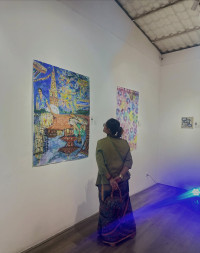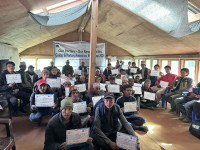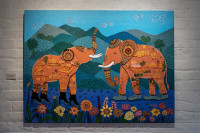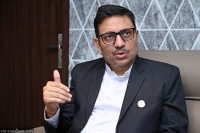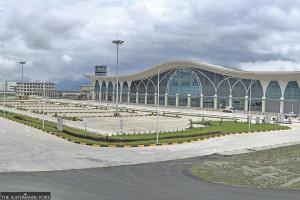Culture & Lifestyle
Turning snow into opportunity: Nepal’s ski movement
What started as a single student’s dream has grown into a foundation that teaches hundreds of Nepalis to ski.
Britta Gfeller
In 2011, Nepali student Utsav Pathak and German backpacker Julius Seidenader met at a café in Pathak’s hometown of Charikot. Neither of them knew that this encounter would spark a movement teaching hundreds of people in Nepal how to ski.
The two young men bonded over their passion for music. Pathak showed the foreigners around in the area, and they became good friends. When Seidenader left after a week, they stayed connected on social media.
In 2015, Pathak, then 20, decided he wanted to try something new: learn to ski. He knew the sport only from television. “Nobody in Nepal was doing this. There were only a few tourists who climbed mountains and skied down,” he recalls.
On Facebook, he saw that his friend Seidenader was a good skier, so he contacted him and asked for tips. This sparked a conversation. Although at first it was only Pathak’s dream to start skiing, they decided it could become something bigger.
They initiated the Ski and Snowboarding Foundation Nepal to empower remote valleys that had been badly affected by the 2015 earthquake. In the long term, skiing and snowboarding could bring a new perspective to areas that were previously dominated by a limited climbing and trekking season.
“People told me that this idea was childish and impossible. But since childhood, I have always been someone who seeks new possibilities and tries to do what is good for the nation and my community.”
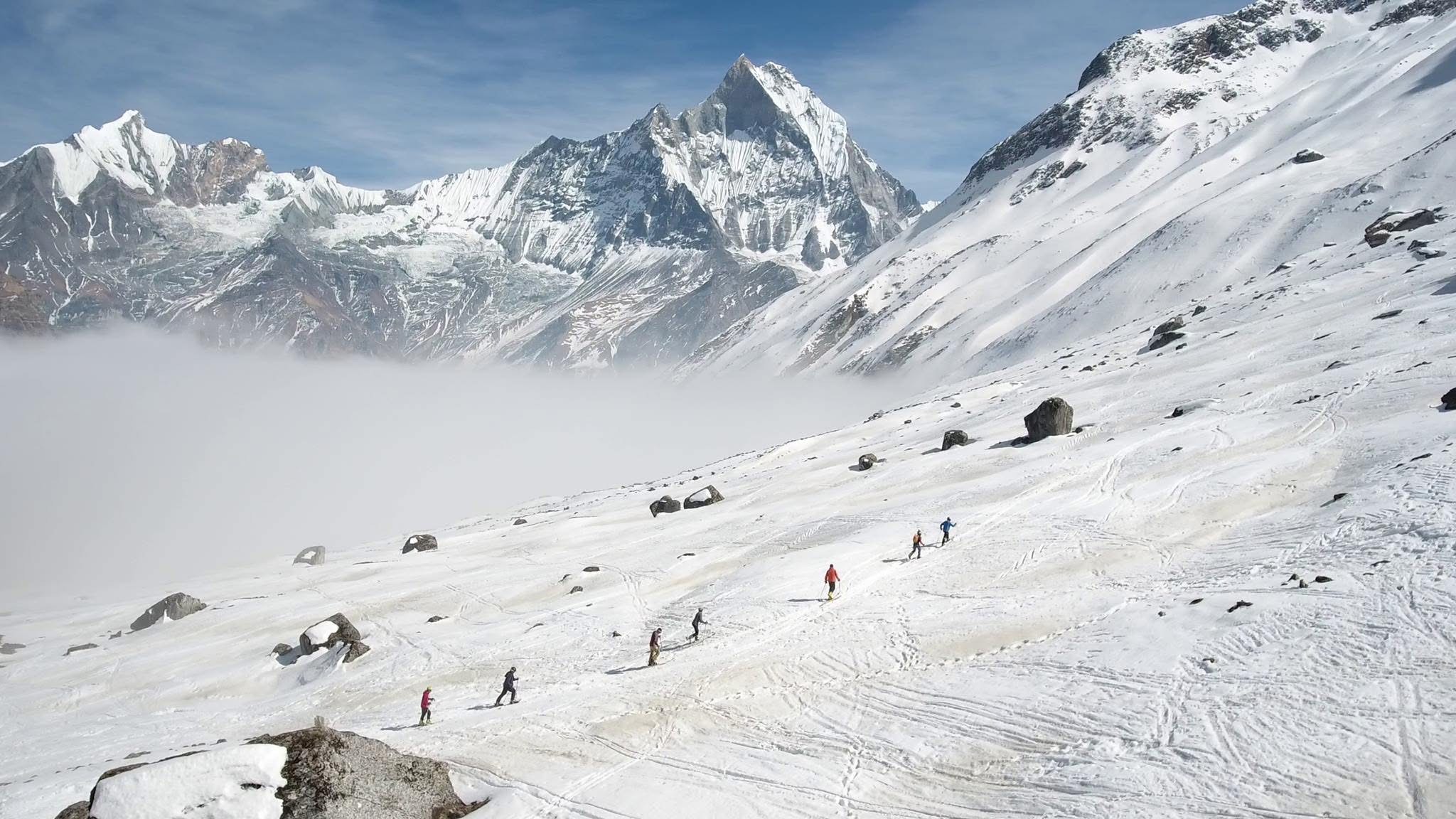
Besides offering new job perspectives, being able to ski helps with rescue missions and allows people to come down mountains faster, thereby saving a lot of energy, Pathak explains.
For their first ski and snowboard course in 2016, they offered 35 spots. Interested people could sign up via Facebook. Some of the participants were friends of Pathak, who was studying Tourism and Hotel Management at the time, and others were climbing guides or trekking guides interested in the sport.
In February 2016, eight experienced instructors from Germany, Austria and Switzerland arrived in Nepal, bringing donated equipment, including poles, boots, boards and skis. The group set out for a 21-day expedition near Pathak’s hometown.
When they arrived, there was no snow. “Everybody was angry at me, and I was so sad,” says Pathak. He thought his dream of bringing skiing to Nepal had failed. But during their first night, there was a big snowfall—when they got up in the morning, everything was white. “Maybe it was luck,” he says in hindsight. “If it had snowed the previous day, we likely wouldn’t have reached the 4,200-metre point.”
All of the participants stood on skis for the first time that day. They fell a lot, but it was a lot of fun. “On day two, I was able to stand. But it took me many years and a lot of practice to really understand skiing,” says Pathak.
From then on, the Ski and Snowboarding Foundation Nepal started organising training sessions at least once a year. At first, they were taught by international instructors. But when the Covid-19 pandemic hit and travelling became impossible, Pathak and his team realised that something needed to change.
“Some of the first participants of the course are now good skiers themselves. So they took over the teaching,” says Pathak. So far, over one thousand Nepalis have taken part in the training, and at least 50 have pursued skiing long-term.
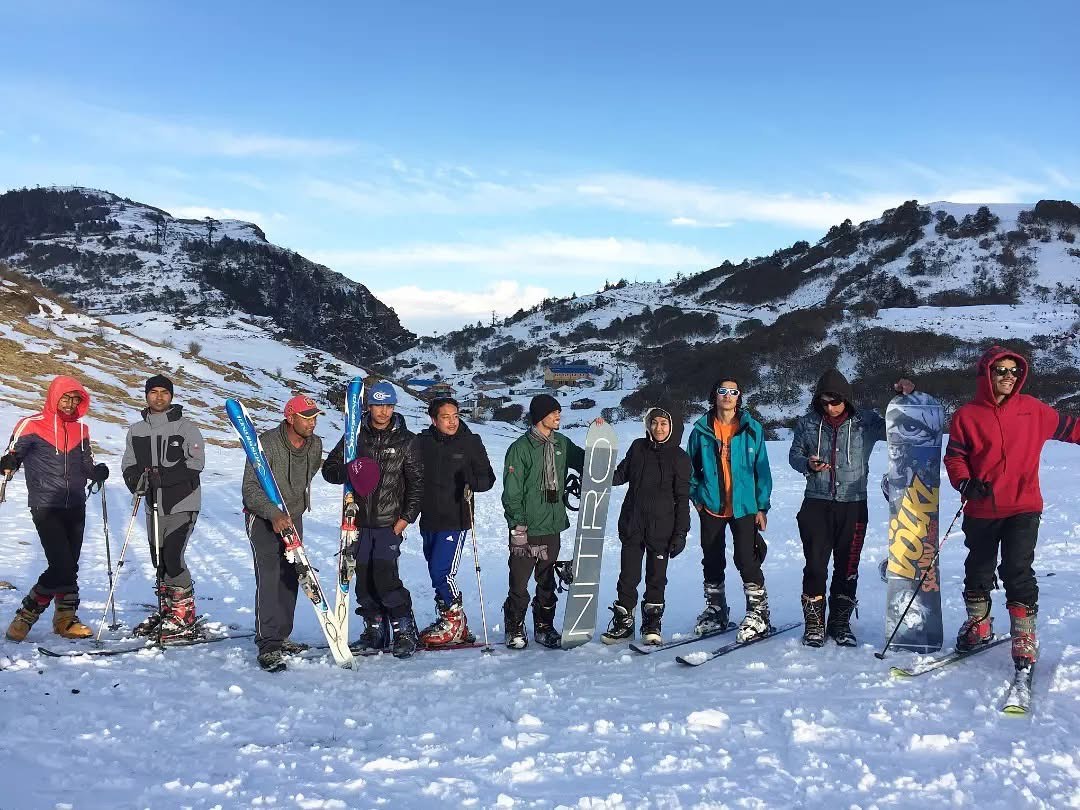
Some of them now make a part of their living by guiding tourists on skiing excursions in the Himalayas. Pathak himself recently founded a company that offers climbing and skiing expeditions—for example, hiking up Mera Peak and then skiing down from the 6,476-metre summit. Pathak met his co-founder, Ningma Dorje Tamang, during the first-ever ski training in February 2016.
“Ski tourism in Nepal will probably never be as big as trekking or climbing,” Pathak says. “But as there is less and less snow in Europe, Nepal could be a good alternative for skiers and snowboarders.” Also in autumn, when it’s not yet skiing season in Europe, the high altitudes and glaciers in Nepal can offer opportunities for winter sports enthusiasts. In addition, the combination of mountain climbing and skiing has great potential for international outdoor fans.
Even though the sport is not as big in Nepal yet as Pathak had hoped, it is gradually growing. In 2018, the first ski lift in Nepal was erected in the Kalinchowk area, where ski training is held. “The lift was locally made, and it barely survived the season,” says Pathak and laughs.
But it helped the beginners in their training. At the end of 2023, Nepal received its first electric ski lift, a gift from the Swiss ski resort of Disentis. “Having a functioning ski lift is one of the biggest successes of our foundation,” Pathak says. He believes that if Nepal wants to build a reputation as a skiing destination, the government should invest more in infrastructure.
Pathak encourages more Nepalis to learn skiing. “When people can ski, they can enjoy the winter. For many living in the mountains, winter means suffering. With skiing, it can be more fun.” He admits that skiing is tough to learn—you need time, put in effort and should not be afraid to fall. “But when you ski, it’s a wonderful feeling. You get addicted to it. I know many people who are always waiting for the next opportunity to go skiing again,” he says.




 13.12°C Kathmandu
13.12°C Kathmandu
